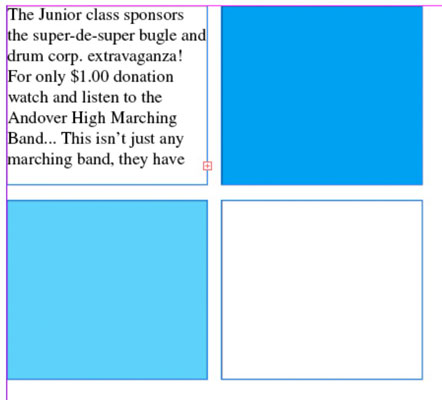
Then your two frames should be threaded together. To thread your second frame with your first frame, go back to page two and click anywhere in the middle of your second frame. Click the Out Port box with your Selection tool and this will start the threading procedure. You’ll notice that there’s a small box in the upper-left corner of the frame (it’s called the In Port) and a small box in the lower-right corner of the frame (it’s called the Out Port and is circled here in red). Go back to page one and, using the Selection tool (select the tool from the Toolbox, because if you use the V shortcut, you’ll actually type the letter “V” in the text frame on the second page), click on the first frame you created. For this example, size doesn’t matter.Ĥ CLICK THE OUT PORT BOX OF THE FIRST FRAME You don’t have to match the exact size of the first frame. In case you haven’t guessed, we’re going to thread these two frames together. Now go to page two and create another text frame as explained above. Because you created a text frame with the Type tool, the cursor will be flashing and ready for you to type. Choose the Type tool and create a text frame on the first page of the document. For instruction purposes in this tutorial, create four pages (be sure to specify at least two pages normally), click the Facing Pages checkbox, and click OK.Īlthough frames in InDesign can be created with any shape tool, if you want a rectangular text frame, you might as well create it with the Type tool (T).


Linking text boxes in indesign for mac plus#
So, I figured I would get everyone up to speed on text threading, including taking it from a master page perspective, plus a few tips for speeding up your editing and proofing workflows.Ĭhoose File>New>Document. However, I still run into quite a few users that haven’t quite mastered the ins-and-outs of the feature. Text threading is a natural component when creating multipage InDesign documents.


 0 kommentar(er)
0 kommentar(er)
